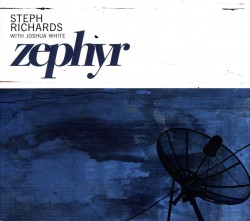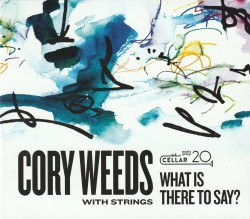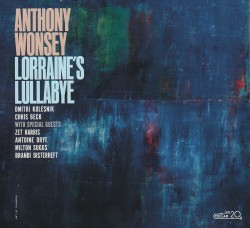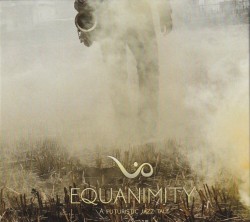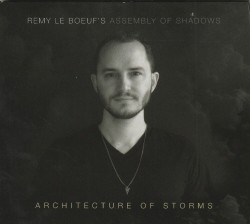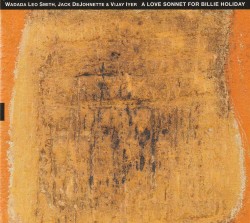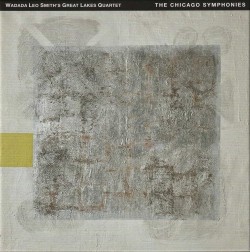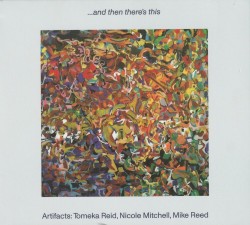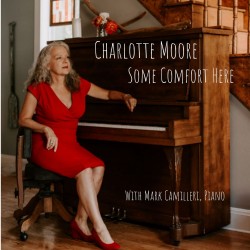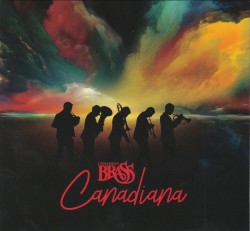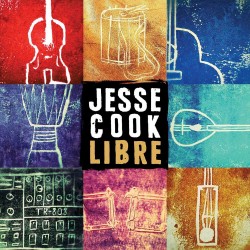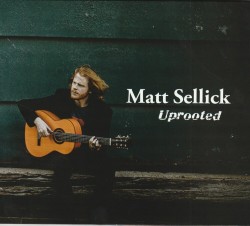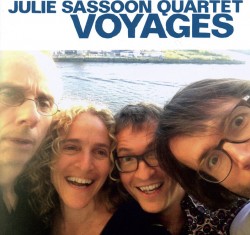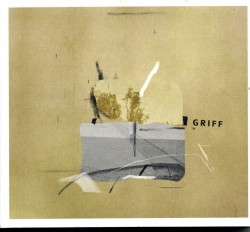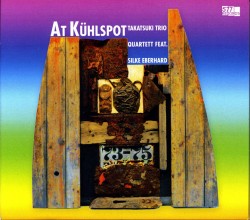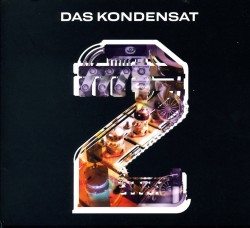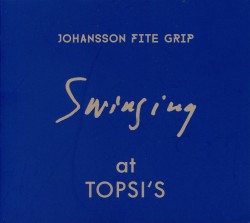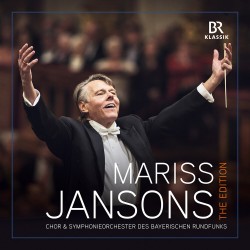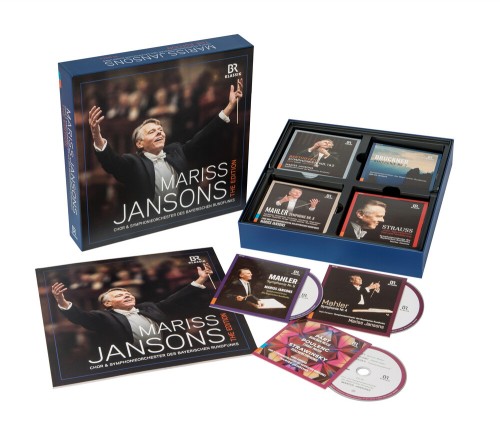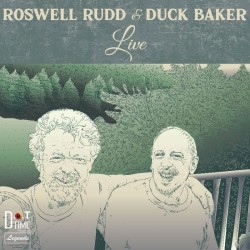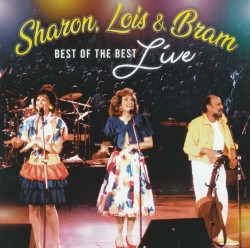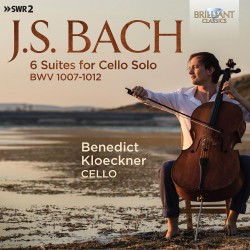 For the past month or so I’ve been immersing myself in new cello recordings. Some of the repertoire selections are old friends, some new to me and some new to the world. Benedict Kloeckner: J.S. Bach – 6 Suites for Cello Solo (Brilliant Classics 96403 naxosdirect.com/search/bri96403) encompasses the old and the new brilliantly, with striking performances of the suites interspersed with miniatures he has commissioned that “can be seen as a response to the challenges of the present [pandemic] in interaction with the Bach suites.” Kloeckner’s Bach, idiomatic contemporary interpretations on a modern instrument, ranges from breakneck speed such as in the Prelude of the first suite to thoughtful and contemplative pacing in the Sarabande of the second; sometimes playful, but always carefully considered, with tasteful ornamentations and occasional surprising rubato passages, such as in the Bourée of the third suite. What makes this 3CD set special though is the new works and how they bridge and complement the original suites. The composers represent an international spectrum: José L. Elizondo (Mexico), Elena Kats-Chernin (Australia), Bongani Ndodana-Breen (South Africa), Éric Tanguy (France), Geoffrey Gordon (USA) and Dai Fujikura (Japan).
For the past month or so I’ve been immersing myself in new cello recordings. Some of the repertoire selections are old friends, some new to me and some new to the world. Benedict Kloeckner: J.S. Bach – 6 Suites for Cello Solo (Brilliant Classics 96403 naxosdirect.com/search/bri96403) encompasses the old and the new brilliantly, with striking performances of the suites interspersed with miniatures he has commissioned that “can be seen as a response to the challenges of the present [pandemic] in interaction with the Bach suites.” Kloeckner’s Bach, idiomatic contemporary interpretations on a modern instrument, ranges from breakneck speed such as in the Prelude of the first suite to thoughtful and contemplative pacing in the Sarabande of the second; sometimes playful, but always carefully considered, with tasteful ornamentations and occasional surprising rubato passages, such as in the Bourée of the third suite. What makes this 3CD set special though is the new works and how they bridge and complement the original suites. The composers represent an international spectrum: José L. Elizondo (Mexico), Elena Kats-Chernin (Australia), Bongani Ndodana-Breen (South Africa), Éric Tanguy (France), Geoffrey Gordon (USA) and Dai Fujikura (Japan).
My first few times through the set I simply let the CDs play and enjoyed the commissions as interludes, kind of palette cleansers, before rushing into the next Bach suite. Sometime later however, I listened to the six miniatures in isolation and was pleasantly surprised to find that they made a satisfying suite themselves. Elizondo’s Under the Starlit Sky of the Rhine specifically references the sixth suite, albeit in passing, and pays tribute to the landscape of Kloeckner’s home region, the Upper Middle Rhine Valley. In I Am Cello, Kats-Chernin compares the slow opening to the blossoming of a flower and describes the lyrical miniature as “almost a song.” Ndodana-Breen, who had an active role in Toronto’s contemporary music scene in the early 2000s, says that Soweto Cello Riffs combines elements of Afropop and South African jazz, although not overtly. Tanguy’s In Between “addresses how emotions during the pandemic have vacillated constantly between uncertainty and hope.” In Gordon’s Nes qu’on porroit, from Machaud’s song “It is no more possible to count the stars […] than it is to imagine or conceive of the great desire I have to see you.” The composer says he was thinking of past pandemics – Black Death, Italian Plague, Spanish Flu – in relation to COVID-19. Although most of these new works make little direct use of Bach’s material, coming full circle Fujikura’s Sweet Suites opens with echoes of the prelude of the sixth Bach suite, but in a minor key, and after brief hints at other movements, dissolves into a quiet and lyrical coda which rises and fades away into the ether. Kloeckner and his colleagues have provided a beautiful new take on Bach’s masterpieces.
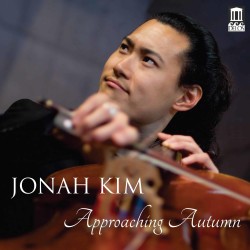 Young South Korean-American cellist Jonah Kim begins Approaching Autumn (Delos delosmusic.com/recording/approaching-autumn) with what I feel is the most important solo cello work of the first half of the 20th century and perhaps the most significant contribution to the genre since Bach, Zoltan Kodály’s Sonata for Solo Cello Op.8 from 1915. In his very personal introduction to the disc, Kim tells us that he considers Janos Starker one of his biggest musical influences. He started corresponding with Starker when he was seven years old after hearing Starker’s Delos recording of the Kodály sonata and later was able to study with him. Starker had impeccable Kodály credentials having first played the solo sonata for the composer when his was 15 in his (and Kodály’s) homeland, Hungary, and then again in 1967 shortly before Kodály’s death. After that performance Kodály told Starker: “If you correct the ritard in the third movement, it will be the Bible performance.” Starker recorded the work four times, the last in 1970 and it is this one that later appeared on the Delos release. So may we assume the correction was made? At any rate, Kim’s own performance is outstanding – big, brash and gritty as called for in the outer movements; sensitive and lyrical in the Adagio (con gran espressione) – and his technique in this extremely challenging work is impressive. Kim is joined by pianist Robert Koenig for the remainder of the disc; the one-movement post-Romantic title work by American Mark Abel (b.1948) providing a kind of a bridge to Grieg’s Sonata for Cello and Piano Op.36 which concludes this excellent disc.
Young South Korean-American cellist Jonah Kim begins Approaching Autumn (Delos delosmusic.com/recording/approaching-autumn) with what I feel is the most important solo cello work of the first half of the 20th century and perhaps the most significant contribution to the genre since Bach, Zoltan Kodály’s Sonata for Solo Cello Op.8 from 1915. In his very personal introduction to the disc, Kim tells us that he considers Janos Starker one of his biggest musical influences. He started corresponding with Starker when he was seven years old after hearing Starker’s Delos recording of the Kodály sonata and later was able to study with him. Starker had impeccable Kodály credentials having first played the solo sonata for the composer when his was 15 in his (and Kodály’s) homeland, Hungary, and then again in 1967 shortly before Kodály’s death. After that performance Kodály told Starker: “If you correct the ritard in the third movement, it will be the Bible performance.” Starker recorded the work four times, the last in 1970 and it is this one that later appeared on the Delos release. So may we assume the correction was made? At any rate, Kim’s own performance is outstanding – big, brash and gritty as called for in the outer movements; sensitive and lyrical in the Adagio (con gran espressione) – and his technique in this extremely challenging work is impressive. Kim is joined by pianist Robert Koenig for the remainder of the disc; the one-movement post-Romantic title work by American Mark Abel (b.1948) providing a kind of a bridge to Grieg’s Sonata for Cello and Piano Op.36 which concludes this excellent disc.
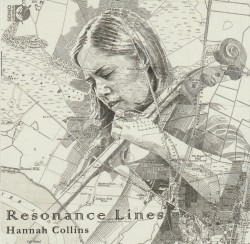 Bach was not the first to write for solo cello and Hannah Collins’ Resonance Lines (Sono Luminus DSL-92252 sonoluminus.com) opens with a Chiacona by Giuseppe Colombi (1635-1694) which predates the Bach suites by half a century. This sets the stage for a recital of mostly contemporary works: two by Kaija Saariaho, the brief Dreaming Chaconne and Sept Papillons; in manus tuas by Caroline Shaw, which draws on the Thomas Tallis motet of the same name; and Benjamin Britten’s Sonata for Solo Cello No.1, Op.72. The last track travels across two and a half centuries: Thomas Kotcheff’s Cadenza (with or without Haydn), a 25-minute work written in 2020 meant to serve (or not) as a cadenza for Haydn’s Cello Concerto in C Major from 1761.
Bach was not the first to write for solo cello and Hannah Collins’ Resonance Lines (Sono Luminus DSL-92252 sonoluminus.com) opens with a Chiacona by Giuseppe Colombi (1635-1694) which predates the Bach suites by half a century. This sets the stage for a recital of mostly contemporary works: two by Kaija Saariaho, the brief Dreaming Chaconne and Sept Papillons; in manus tuas by Caroline Shaw, which draws on the Thomas Tallis motet of the same name; and Benjamin Britten’s Sonata for Solo Cello No.1, Op.72. The last track travels across two and a half centuries: Thomas Kotcheff’s Cadenza (with or without Haydn), a 25-minute work written in 2020 meant to serve (or not) as a cadenza for Haydn’s Cello Concerto in C Major from 1761.
Listening to this piece led to the realization of how a cadenza – traditionally a composed or improvised interlude in a concerto giving the soloist an opportunity show off – differs from a stand-alone work that needs to provide its own context and development. Collins tells us that “Kotcheff’s work contains musical nods to the other works on the album and ties everything together in an energetic and surprise-filled adventure.” It certainly does that. When listening to the disc before reading the program notes, one of those surprises was hearing Britten’s solo sonata, which I consider another milestone in the solo cello repertoire, quoted in a work “about” Haydn. The notes also give this a context however. It seems that Britten wrote a cadenza for Rostropovich for the same Haydn concerto and the result can be heard in a 1964 recording with Britten conducting “Slava” and the English Chamber Orchestra (it’s well worth searching out on YouTube). Collins rises to all the various challenges of the diverse repertoire on this collection, especially those of the “cadenza” which requires everything from virtuosic bombast to the most subtle intimacy.
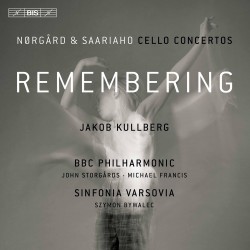 It is fitting that Collins’ disc ends with a contemporary cadenza inspired by one of the first great cello concertos because that leads us to Remembering – Nørgård & Saariaho Cello Concertos (BIS-2602 bis.se) featuring Jakob Kullberg. Kullberg (b.1979, Denmark) has worked extensively with both these composers and all of Per Nørgård’s cello writing in past 20 years has been dedicated to him. The two works by that Danish master recorded here, however, were written more than three decades ago when Kullberg was just a child. Between (1985) is a three-movement work in which the cellist begins in isolation, “unable to unite with the orchestral sound,” but is gradually able to integrate with the larger group with the help of four solo cellos from the orchestra. At one point the din from the larger group even includes the sound of car horns reminiscent of the prelude to Ligeti’s Grand Macabre. The second movement sees a gradual integration of the cello into the slow-moving textures of the orchestra. In the extended third movement, the cello takes a more traditional role but with a twist: the solo line is based on notes from the Javanese pentatonic scale slendro, giving it an exotic edge. Remembering Child was composed as a viola concerto in 1986 but is presented here in Kullberg’s adaptation for cello, including a new cadenza of his own design. The work honours Samantha Smith, an American schoolgirl, peace activist and child actress famous during the Cold War, who was killed in a plane crash at 13 in 1985, although Nørgård says the piece isn’t intended as a requiem.
It is fitting that Collins’ disc ends with a contemporary cadenza inspired by one of the first great cello concertos because that leads us to Remembering – Nørgård & Saariaho Cello Concertos (BIS-2602 bis.se) featuring Jakob Kullberg. Kullberg (b.1979, Denmark) has worked extensively with both these composers and all of Per Nørgård’s cello writing in past 20 years has been dedicated to him. The two works by that Danish master recorded here, however, were written more than three decades ago when Kullberg was just a child. Between (1985) is a three-movement work in which the cellist begins in isolation, “unable to unite with the orchestral sound,” but is gradually able to integrate with the larger group with the help of four solo cellos from the orchestra. At one point the din from the larger group even includes the sound of car horns reminiscent of the prelude to Ligeti’s Grand Macabre. The second movement sees a gradual integration of the cello into the slow-moving textures of the orchestra. In the extended third movement, the cello takes a more traditional role but with a twist: the solo line is based on notes from the Javanese pentatonic scale slendro, giving it an exotic edge. Remembering Child was composed as a viola concerto in 1986 but is presented here in Kullberg’s adaptation for cello, including a new cadenza of his own design. The work honours Samantha Smith, an American schoolgirl, peace activist and child actress famous during the Cold War, who was killed in a plane crash at 13 in 1985, although Nørgård says the piece isn’t intended as a requiem.
The two works by Nørgård provide bookends for Finnish composer Kaija Saariaho’s Notes on Light written two decades later (2006). The first movement, Translucent, secret, takes place as if under water, picking up where her previous work for cello and orchestra Amers left off. After a “heated debate” between cello and orchestra in the second movement, On Fire, the gentler Awakening, which draws on material from Saariaho’s oratorio La Passion de Simone, includes a quiet two-minute-long cadenza in the higher reaches of the cello composed by Kullberg. It’s becoming obvious why these composers are happy to work with this creative soloist. As Aleksi Barrière’s detailed program note points out, at this point we might think that the concerto is over, as an inversion of the tradition three-movement form, here slow-fast-slow, has been completed. But there are two more movements to come. Kullberg gets a rest though in the shimmering fourth movement Eclipse, and then re-enters quietly for the final, Heart of Light, which glimmers and gradually builds, only to subside into quietude again. That’s actually how all three of these concertos end, “not with a bang, but a whimper.” There are more than enough bangs along the way however to hold our attention and make for a satisfying disc.
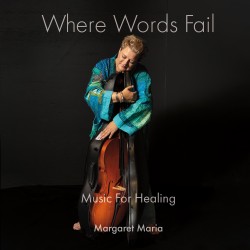 Sometimes I wonder if it is possible to write for solo cello without referencing the iconic Bach Suites. Certainly Margaret Maria, in her most recent release Where Words Fail – Music for Healing (margaretmariamusic.com) does so in the opening track with arpeggiation reminiscent of the first Prelude, but it feels natural and is only one of its many dense layers. As with previous releases, Maria’s music is lush and melodic, using many overlaid solo cello lines to create an orchestral atmosphere that is warm and welcoming. The current offering is the result of personal trauma, a response to almost losing her sister, who was on a ventilator and in a medically induced coma for more than two weeks as a result of COVID-19. The resulting compositions bear such names as Blessing of Awakening (written in advance of, and in hope for, her sister’s return to consciousness), Raindrops from Heaven (with an ostinato reminiscent of Pachelbel’s Canon) and From the Brink (with a fluttering bed track and eerie harmonics ultimately resolving into peaceful pizzicato under a gentle rising motif that resembles a hymn of praise). The disc (actually a digital release) concludes with the gentle Turning Broken into Beautiful, a meditative wash of soothing colours over Pachelbel-like pizzicato bass, providing a joyful resolution to this healing journey. Maria provides real comfort for these terrible times.
Sometimes I wonder if it is possible to write for solo cello without referencing the iconic Bach Suites. Certainly Margaret Maria, in her most recent release Where Words Fail – Music for Healing (margaretmariamusic.com) does so in the opening track with arpeggiation reminiscent of the first Prelude, but it feels natural and is only one of its many dense layers. As with previous releases, Maria’s music is lush and melodic, using many overlaid solo cello lines to create an orchestral atmosphere that is warm and welcoming. The current offering is the result of personal trauma, a response to almost losing her sister, who was on a ventilator and in a medically induced coma for more than two weeks as a result of COVID-19. The resulting compositions bear such names as Blessing of Awakening (written in advance of, and in hope for, her sister’s return to consciousness), Raindrops from Heaven (with an ostinato reminiscent of Pachelbel’s Canon) and From the Brink (with a fluttering bed track and eerie harmonics ultimately resolving into peaceful pizzicato under a gentle rising motif that resembles a hymn of praise). The disc (actually a digital release) concludes with the gentle Turning Broken into Beautiful, a meditative wash of soothing colours over Pachelbel-like pizzicato bass, providing a joyful resolution to this healing journey. Maria provides real comfort for these terrible times.
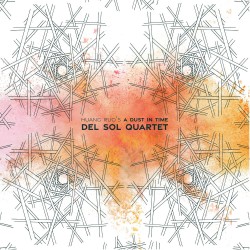 The next work, which I would also consider healing music, is a string quartet that starts with an extended, somewhat melancholy duet between cello and viola. Chinese-born US-based composer Huang Ruo composed A Dust in Time (Bright Shiny Things brightshiny.ninja) as a response to the worldwide COVID pandemic. It is a meditative and cathartic work written in collaboration with the Del Sol Quartet who first performed it using the labyrinth of Grace Cathedral in San Francisco as its stage, livestreaming the premiere from the empty church. In the booklet notes – the booklet is actually a colouring book featuring stylized mandalas created especially for this project by high school student Felicia Lee – we learn that the first performance was preceded by an open-air rehearsal for a few friends in the park across the street from the cathedral. “Soon we were joined by passersby who paused with their dogs and strollers to listen as Huang Ruo’s hour-long palindromic passacaglia grew from silence to euphoria and then faded back into the wind, sirens and jackhammers of the city.” Listening to this recording in the relative quiet of my home I have to imagine the Cage-ian ambience of that experience, but the arc of the music is immersive and compelling, and indeed cathartic. The Del Sol Quartet are tireless champions of contemporary music and in the last three decades have commissioned or premiered literally thousands of works from such composers as Terry Riley, Chen Yi, Mason Bates, Pamela Z and Gabriela Lena Frank to name just a few. You can find excerpts on YouTube of another project Huang Ruo has been working on through the pandemic – a production of M. Butterfly in collaboration with playwright Henry David Hwang for the Santa Fe Opera.
The next work, which I would also consider healing music, is a string quartet that starts with an extended, somewhat melancholy duet between cello and viola. Chinese-born US-based composer Huang Ruo composed A Dust in Time (Bright Shiny Things brightshiny.ninja) as a response to the worldwide COVID pandemic. It is a meditative and cathartic work written in collaboration with the Del Sol Quartet who first performed it using the labyrinth of Grace Cathedral in San Francisco as its stage, livestreaming the premiere from the empty church. In the booklet notes – the booklet is actually a colouring book featuring stylized mandalas created especially for this project by high school student Felicia Lee – we learn that the first performance was preceded by an open-air rehearsal for a few friends in the park across the street from the cathedral. “Soon we were joined by passersby who paused with their dogs and strollers to listen as Huang Ruo’s hour-long palindromic passacaglia grew from silence to euphoria and then faded back into the wind, sirens and jackhammers of the city.” Listening to this recording in the relative quiet of my home I have to imagine the Cage-ian ambience of that experience, but the arc of the music is immersive and compelling, and indeed cathartic. The Del Sol Quartet are tireless champions of contemporary music and in the last three decades have commissioned or premiered literally thousands of works from such composers as Terry Riley, Chen Yi, Mason Bates, Pamela Z and Gabriela Lena Frank to name just a few. You can find excerpts on YouTube of another project Huang Ruo has been working on through the pandemic – a production of M. Butterfly in collaboration with playwright Henry David Hwang for the Santa Fe Opera.
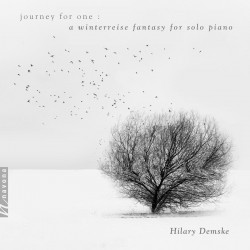 Many readers will be aware of my affection for Schubert’s Winterreise in its many and varied interpretations, including Hans Zender’s contemporary chamber orchestra setting, replete with bells and whistles, and Philippe Sly and the Chimera Project’s reworking with klezmer ensemble. All of the versions I have encountered maintain the melody line more or less intact, and feature a voice of one range or another. When I encountered Richard Krug’s transcription for string quartet and baritone, however, I found myself imagining a rendition in which the soloist would be a cellist. I haven’t found a cello version yet, but this month I did encounter another purely instrumental adaptation. Pianist Hilary Demske, creator of Journey for One: A Winterreise Fantasy for Solo Piano (Navona Records navonarecords.com/catalog/nv6370) is quick to point out that it was not her intention to “arrange or improve the original work but to offer a different lens and add my individual perspective […] to an intimate glimpse into grief, the simple story of a young man rejected by love [that] conveys the universal experience of searching for peace.” She goes on to say “Foremost in my mind was the text and meaning of Müller’s poetry. I built many pieces around individual lines that resonated with me and reflected the overall poem, leading to increasingly dramatic compositions and unusual techniques.” The booklet includes the German titles and English translations of Müller’s poems (something that even some vocal versions neglect to do) and lists the piano preparations and other instruments employed on each track. These include such extraneous materials as timpani mallets placed on the piano strings, castanets, aluminum foil, drumsticks wedged between piano strings, xylophone mallet on wood block and rubber floor mat on strings, among others.
Many readers will be aware of my affection for Schubert’s Winterreise in its many and varied interpretations, including Hans Zender’s contemporary chamber orchestra setting, replete with bells and whistles, and Philippe Sly and the Chimera Project’s reworking with klezmer ensemble. All of the versions I have encountered maintain the melody line more or less intact, and feature a voice of one range or another. When I encountered Richard Krug’s transcription for string quartet and baritone, however, I found myself imagining a rendition in which the soloist would be a cellist. I haven’t found a cello version yet, but this month I did encounter another purely instrumental adaptation. Pianist Hilary Demske, creator of Journey for One: A Winterreise Fantasy for Solo Piano (Navona Records navonarecords.com/catalog/nv6370) is quick to point out that it was not her intention to “arrange or improve the original work but to offer a different lens and add my individual perspective […] to an intimate glimpse into grief, the simple story of a young man rejected by love [that] conveys the universal experience of searching for peace.” She goes on to say “Foremost in my mind was the text and meaning of Müller’s poetry. I built many pieces around individual lines that resonated with me and reflected the overall poem, leading to increasingly dramatic compositions and unusual techniques.” The booklet includes the German titles and English translations of Müller’s poems (something that even some vocal versions neglect to do) and lists the piano preparations and other instruments employed on each track. These include such extraneous materials as timpani mallets placed on the piano strings, castanets, aluminum foil, drumsticks wedged between piano strings, xylophone mallet on wood block and rubber floor mat on strings, among others.
Devotees of traditional lieder and fans of Schubert may not get much out of this quite extreme interpretation of Winterreise, but I found it quite satisfying. Rather than a transcription per se, it’s an exploration of the poems themselves in Demske’s personal voice, during which Schubert’s melodies and rhythms occasionally shine through, glistening like familiar gems. A particular highlight was the antepenultimate movement Mut (Courage) which in Demske’s percussive performance (drumsticks on woodblocks and strings) I found reminiscent of the Baby Shark song that my young neighbours Henry (five) and James (two) take endless delight in exuberantly declaiming.
We invite submissions. CDs, DVDs and comments should be sent to: DISCoveries, WholeNote Media Inc., The Centre for Social Innovation, 503 – 720 Bathurst St. Toronto ON M5S 2R4.
David Olds, DISCoveries Editor
discoveries@thewholenote.com
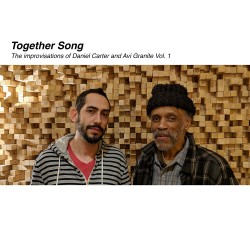 Together Song
Together Song

